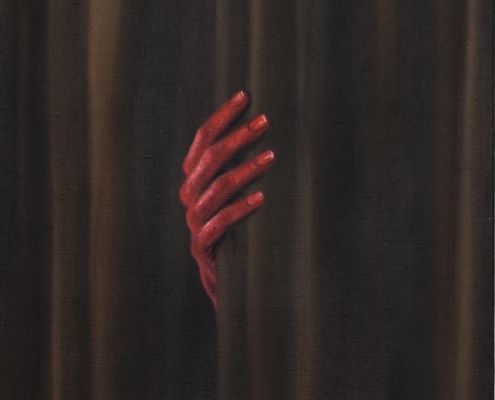This theme of combining polarized ideals of cleanliness and detritus isn’t new, however Turner has allowed this style to define his practice thus bringing it into a new frame of reference in the 21st century. Where destruction within the white cube in the 1960’s was seen as a way to rebel against the artistic bourgeois and challenge the very definition of art, Turner is a portraitist for a world easily frightened. His work interacts with viewers not through hostility but through tragedy and nostalgia for the idyll. It is in this way that it is sublime: it showcases not only the very danger that defines our society but also portrays the humility of man’s own existence. His works remind us of our frivolous nature, as well as our ephemeral time on earth. Since our illusions of security were destroyed in such a significant way ten years ago, work meant to inspire an exalted feeling inside of us through means of size and grandeur may not have the same affect as it used to. Instead one only needs to display the wreckage and debris of a former greatness and exhibit Ralph Waldo Emerson’s decree that “man is a god in ruins”.
[1] While the history of defacement and iconoclasm is rich, Turner’s work communicates more directly with John Baldessari’s Cremation Project of the early 70’s. Here Baldessari took all of his paintings from 1953 to 1966 and ritualistically burned them. Afterwards he saved the ashes of these artworks and from them baked cookies and placed them in an urn accompanied with a plaque showing the “birth and death” dates of the works. Similarly, Man Ray’s 1923 work Object to be Destroyed was created with the premeditated intention that it would one day be destroyed, which it inevitably was in 1957 by a group of French student protestors who called themselves ‘Jarivistes’.
* Sooting Plexiglas, 2007
* Untitled 5150, bitumen emulsion, camphophenique, transparent vinyl, wood, 17″ x 15″ x 2″ (unique) 2006-2011
* Mercury Release, dropped fluorescent tube from gallery fixture, dimensions variable, 2010
* Pierre Marteau was a fictional author invented by Dutch publishing houses during the Enlightenment and was used as an imprint for books published anonymously as early as 1660. More than three hundred books written by several different writers were published under him. Most publications were anti-French and anti-Catholic as well as experimental, as if the authors were trying to write in the new fictional style we now call the novel. Often times the sexual practices of young nuns and Jesuit priests were described in detail, as well as the French aristocracy, specifically Louis XIV and his numerous affairs.
* German Expressionist painter Kirchner did not want to rely on other critics to praise his work and wanted to make sure his are was understood properly. As a result he created the imaginary critic Louis de Marsalle who wrote glowing reviews on his work.
 https://www.nastymagazine.com/wp-content/uploads/2024/07/WEB2-1.jpg
823
895
Editor Nasty
https://www.nastymagazine.com/wp-content/uploads/2015/02/new-logo-basker-WHITE4.png
Editor Nasty2024-07-24 12:01:502024-07-24 12:02:03Mia Middleton / Fleeting Phenomena
https://www.nastymagazine.com/wp-content/uploads/2024/07/WEB2-1.jpg
823
895
Editor Nasty
https://www.nastymagazine.com/wp-content/uploads/2015/02/new-logo-basker-WHITE4.png
Editor Nasty2024-07-24 12:01:502024-07-24 12:02:03Mia Middleton / Fleeting Phenomena









